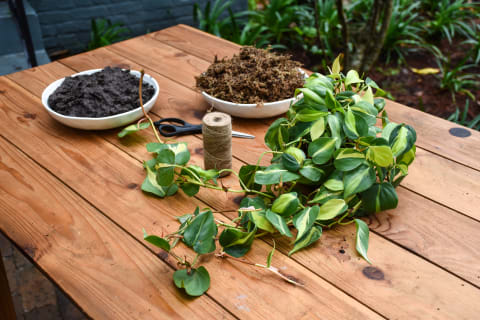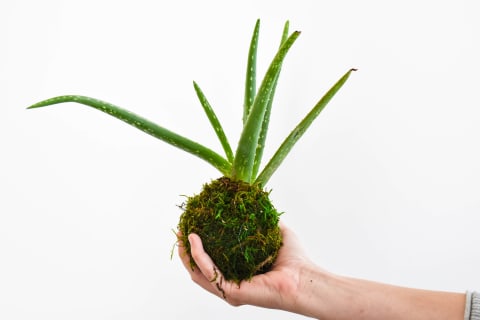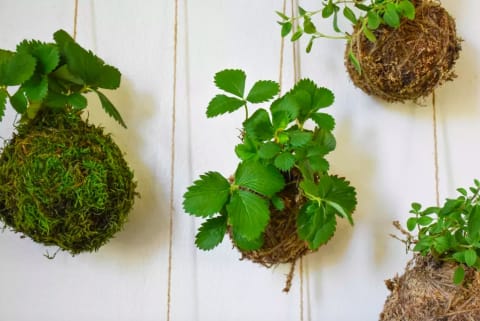The craft of kokedama is a reflection of the Japanese philosophy of wabi-sabi, the art of appreciating beauty in the world’s natural imperfection. There is no direct Western translation for the spirit of this philosophy, but loosely translated, wabi is the quality of simplicity, whether rustic or refined, and often refers to both natural and manmade items. Sabi refers to the beauty or serenity that comes with age and time. Wabi-sabi is a blooming flower, a delicate crack in a handmade bowl, a well-thumbed book, an oddly shaped (but delicious) homegrown tomato, a falling leaf, or an asymmetrically displayed kokedama. It’s an appreciation of all that is natural, simple, and imperfect. 2. Wrap roots in wet sphagnum moss, securing with string. This will keep the plant roots moist and healthy. 4. Cover root base with mud mixture, forming a ball. Use this opportunity to sculpt and mold the shape of your kokedama with care and patience. 5. Cover ball in sheet moss. Place ball on top of laid-out moss, then wrap around the circumference.






